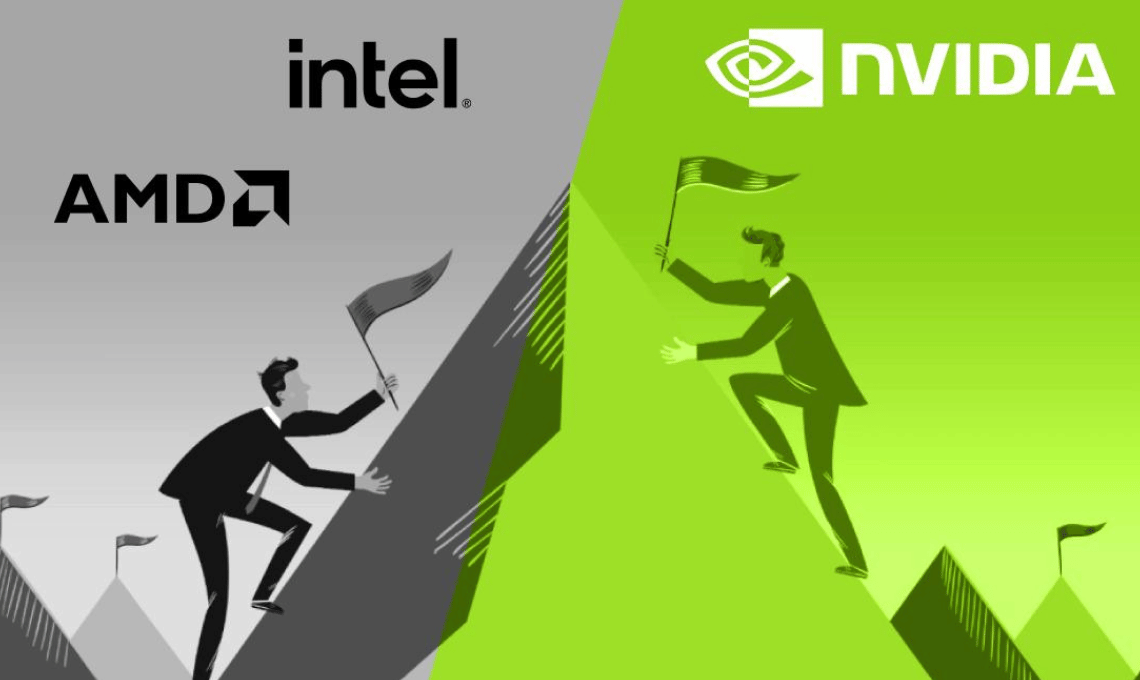AMD and Intel Step Up to Compete with Nvidia in AI Chip Race
In the dynamic world of artificial intelligence (AI), Nvidia, a prominent player, faces increasing competition from rivals like Intel and Advanced Micro Devices (AMD). Nvidia’s sales have more than doubled and its market value has more than tripled, largely thanks to the demand for its chips fueled by the rise of generative AI and the ChatGPT chatbot’s popularity. Despite this success, the company’s competitors are not sitting idle.
Intel and AMD, traditionally focused on the personal computer market, are now shifting their efforts toward data-center segments to stimulate revenue growth for Nvidia’s specialized chip platforms. AMD, leveraging advancements in technology and a strategic partnership with Taiwan Semiconductor Manufacturing, has been chipping away at Intel’s market share in central processing chips for data centers. AMD’s data center sales jumped over 64% last year while Intel’s by 15%. However, Nvidia’s dominance in specialized chip platforms for AI applications has redirected some of the tech giants’ spending away from Intel and AMD, impacting their data center sales.
To counter this, AMD is introducing a new class of AI accelerator chips, the MI300 family. An event near Nvidia’s headquarters will spotlight these and other AI products. AMD’s CEO, Lisa Su, projects substantial revenue from these chips in the coming year, aiming to bolster the company’s data-center segment while the new AI chips will generate $2 billion in revenue for the firm in 2020, according to the third-quarter call held by the company last month.
Intel, on the other hand, is undergoing a significant turnaround to regain its manufacturing edge and improve its PC and data center operations. Faced with competition and industry shifts, Intel has seen declining revenues in recent years after accounting for the memory business sale in 2021, this year’s drop is anticipated to continue. An upcoming event in New York City on Dec 14 will showcase Intel’s latest AI offerings, including chips enabling generative AI to run directly on PCs, a feature expected to be significant in upcoming computers and smartphones.
Wall Street is optimistic; FactSet projections indicate that analysts anticipate double-digit sales growth in Intel’s PC and data center categories by 2024. Despite these efforts, Nvidia’s projected data center revenue vastly overshadows that of its competitors. Analysts predict that Nvidia’s dominance in the AI processor market will continue, with its revenue expected to surpass Intel’s historical peak in the coming years. With sales of $91 billion by the end of its fiscal year, which ends in January 2025, Intel would have made 15% more than it did the previous year.
However, the landscape is not entirely one-sided. Tech giants, typically averse to relying on a single supplier for critical technology, are open to alternatives. Nvidia’s stronghold in AI training creates a challenging environment for its rivals, but areas like AI inferencing present more opportunities for competition. As the AI market evolves, Nvidia’s competitors are gearing up, indicating a dynamic and competitive future in AI technology.



